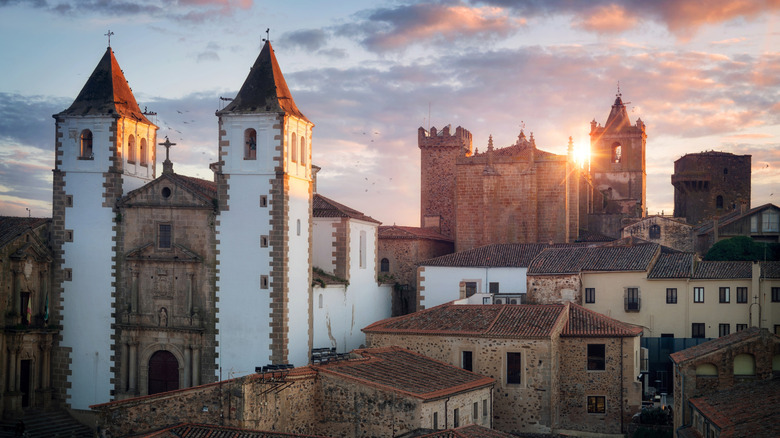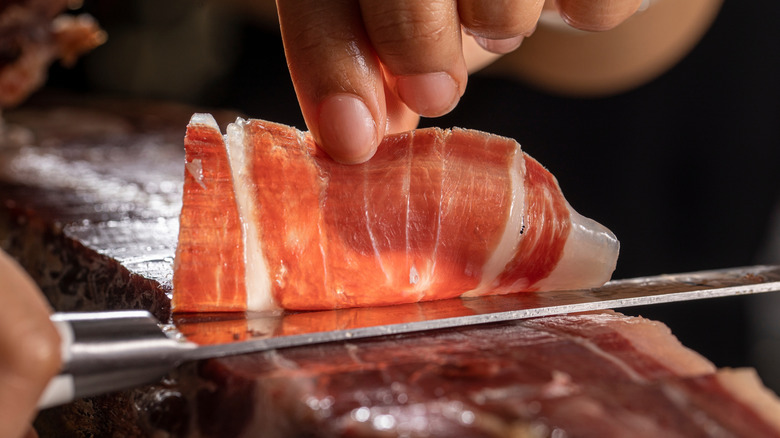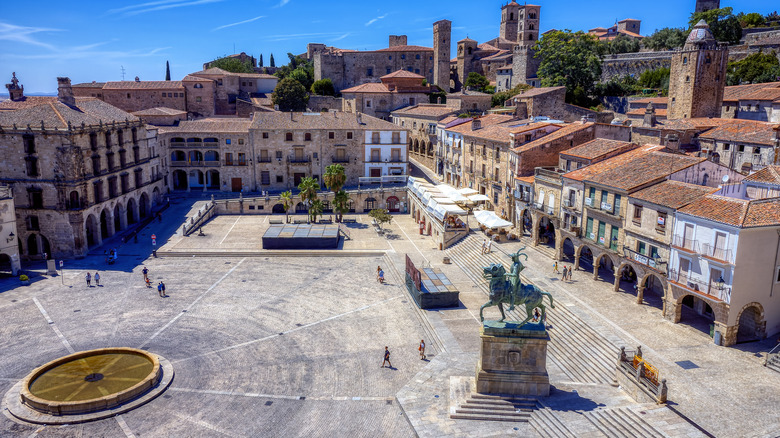Medieval Architecture And Cobbled Streets Thrive In The Historic Heart Of This Wildly Underrated Spanish City
Bordering Portugal on the western side of Spain, the Extremadura region is home to extraordinary places to see and visit, from UNESCO-listed architectural sites to historic natural greenway trails. And one of its top sites is the city of Cáceres. Like many in the region, this city has persisted through Roman, Moorish, and Gothic occupation, and it has the bones to prove it in the form of charming cobbled streets, stately mansions, and battlements that have stood the test of time.
Thanks to the diverse cultural influences that have colored its streets, the Ciudad Monumental became a UNESCO World Heritage site in 1986. While not as well-known for it as Spain's eastern city of Girona, known for rivaling Barcelon'as beauty, Cáceres has served as a principal film setting for "Game of Thrones" and "The House of the Dragon," and avid viewers of both shows might recognize several of the locations in Cáceres' Old Town, including the extra-wide Arco de la Estrella, the exterior of the Palace of the Golfines, and the steps of the Cuesta de la Compañía alleyway. Take in 12th-century facades in the sunny Plaza Mayor (one of the largest in Spain), join a dramatic evening tour guided by troubadours, or see the city streets from on high at the early 20th-century Santuario de la Virgen de la Montaña just outside town to feel like an intrepid traveler of Cáceres' history over the years.
What do do and see in Cáceres
Structures like the iconic Bujaco Tower, the great wooden doors of Cáceres Cathedral, and the dramatic white bell towers of the Church of San Francisco Javier make for perfect photo backdrops. Spectacular city views can be found at the top of all three. A walk through the Jewish Quarter, full of pretty white-washed homes and gardens, offers a more quotidian view of city life. And at the Convent of San Pablo, cloistered nuns have been famous for selling cookies and pastries using a secret window and password exchange since the 15th century.
In addition to its historic artworks (the Black Christ of Santa Maria poses a formidable example), seekers can find contemporary examples of Spain's major oeuvres, too. German art collector Helga de Alvear gathered over 3,000 pieces of contemporary artworks during her lifetime, all of which are housed in a stark, modernist structure near the center of town. The Casa de las Veletas palace, now Cáceres Museum, contains works by Picasso and Miró, along with the haunting beauty of the world's second-largest cistern well in its basement.
Of course, no trip through a Spanish city would be complete without tasting its tapas and sampling its wines. Cuisine in Cáceres varies from flavorful rustic dishes like migas (a stir-up of fried bread crumbs and other leftovers, such as chorizo and eggs) to the exceptional, as in the classic gastronomy borne of Chef Toño Pérez at Atrio (three Michelin stars). Local specialties like heavily marbled (and almost nutty) cured Jamón ibérico feature throughout eateries and providores in Cáceres, as does Torta del Casar — a raw sheep's milk cheese whose buttery, pudding-like texture tempered by the pleasant essence of thistle must be tasted to be believed.
How to get to Cáceres and where to stay
For most travelers, getting to Cáceres by train or bus will be most logical. Trains from Madrid take just over three hours and cost as little as US$6.74 (£6.01 as of this publication), leaving every 15 minutes or so between 8 a.m. and 6 p.m. If driving, the journey is also about three hours, minus any scenic breaks to take in the majestic Spanish countryside. You might also consider stopping in historic Toledo for its iconic art and historic civilizations, just an hour south of Madrid on the A-40, on your way.
With a population above 95,000, Cáceres has plenty of services and a variety of options for accommodation. Both the NH Collection Cáceres Palacio de Oquendo and Parador de Cáceres host luxurious stays in central, refurbished medieval palaces, starting from around US$112 (approximately £100). However, Rick Steves' recommends B&Bs for a more authentic experience, known locally as "hostales" or "pensiones." Both AirBnB and Booking.com host listings for hundreds of these properties.


